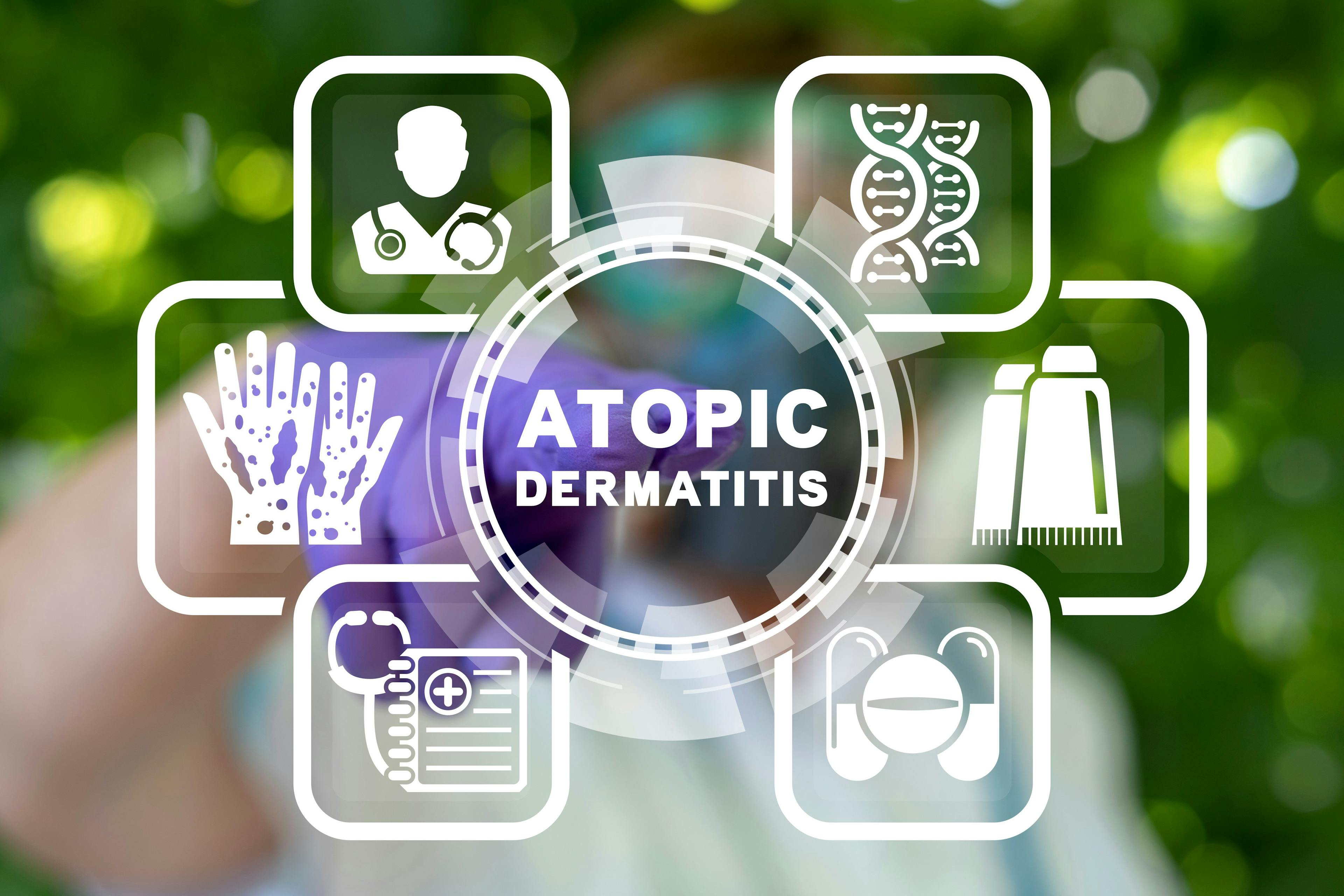- Acne
- Actinic Keratosis
- Aesthetics
- Alopecia
- Atopic Dermatitis
- Buy-and-Bill
- COVID-19
- Case-Based Roundtable
- Chronic Hand Eczema
- Drug Watch
- Eczema
- General Dermatology
- Hidradenitis Suppurativa
- Melasma
- NP and PA
- Pediatric Dermatology
- Pigmentary Disorders
- Practice Management
- Precision Medicine and Biologics
- Prurigo Nodularis
- Psoriasis
- Psoriatic Arthritis
- Rare Disease
- Rosacea
- Skin Cancer
- Vitiligo
- Wound Care
News
Article
Dermatology Times
Reviewing New Tapinarof Data for Atopic Dermatitis Treatment
Author(s):
Tapinarof is showing promise in the landscape of dermatological treatment. Adelaide Hebert, MD, FAAD, recently served as an investigator for 2 studies presented at the European Academy of Dermatology and Venereology (EADV) Congress and discussed key points with Raj Chovatiya, MD, PhD.
“As a pediatric dermatologist, I’m faced with [choosing] what will be approved for the child so we can get it covered by insurance,” said Adelaide Hebert, MD, FAAD, professor and the chief of pediatric dermatology at McGovern Medical School at UTHealth Houston in Houston, Texas. “That being said, safety becomes, of course, a preeminent component of managing atopic dermatitis (AD). We also need agents that will treat both the acute phase and the maintenance phase of this disease.”
Chovatiya discussed new tapinarof data in a recent Dermatology Times Between the Lines video program.

Hebert took a deep dive into the latest findings on the effectiveness of tapinarof (Vtama), a nonsteroidal aryl hydrocarbon receptor (AhR) agonist specifically designed for treating AD, with Raj Chovatiya, MD, PhD, assistant professor of dermatology at the Northwestern University Feinberg School of Medicine in Chicago, Illinois. The conversation was part of a Dermatology Times Between the Lines custom video series called “Relief from Core AD Symptoms: Topical Cream Treatments for Moderate to Severe Atopic Dermatitis in Adults and Pediatrics,” delving into key data from 2 pivotal phase 3 trials.
Tapinarof is showing promise in the landscape of dermatological treatment. Hebert recently served as an investigator for 2 studies presented at the European Academy of Dermatology and Venereology (EADV) Congress in Berlin, Germany.
Chovatiya explained, “We’ve always searched for possible topicals that we can use long term that are going to stay safe [to use], that are not going to have the same [adverse]effects we think about for our topical steroids, that we put on almost everything and potentially can work across a range of severity and help the most important symptom that we think about—itch—for AD.”
Efficacy and Safety
The first study presented at EADV investigated the efficacy and safety of tapinarof cream 1% once daily in the treatment of AD in both adults and children as young as 2 years old. The study included data from the phase 3ADORING 1 (NCT05014568) and ADORING 2 (NCT05032859) trials, in which patients were randomly assigned to receive tapinarof cream 1% or a vehicle for 8 weeks. The primary efficacy end point was a Validated Investigator Global Assessment for Atopic Dermatitis (vIGA-AD) response at week 8, defined as a score of clear (0) or almost clear (1) and a 2-grade or greater improvement from baseline.1
Results showed that tapinarof cream 1% administered once daily significantly improved vIGA-AD responses compared to the vehicle group, with a higher proportion of patients achieving clear or almost clear skin. Secondary end points, including a75% or greater improvement in Eczema Area and Severity Index (EASI75) score and a reduction in Peak Pruritus Numerical Rating Scale (PP-NRS) score, were also met with statistical significance.1
The study included patients of various age groups and skin types, and tapinarof demonstrated efficacy across these demographics. Safety assessments showed that treatment-emergent adverse events (TEAEs) were mostly mild or moderate, with folliculitis, headache, and nasopharyngitis being the most frequent. Trial discontinuation rates due to TEAEs were lower with tapinarof compared to the vehicle.1
Tapinarof cream 1% once daily demonstrated statistically significant efficacy in treating AD in both adults and children as young as 2 years. It was well tolerated, with a predictable safety profile, suggesting its potential as a nonsteroidal topical medication for AD treatment without restrictions on duration, extent, or sites of application. 1
Itch Relief
The second study presented at EADV studied rapid relief for pruritus with tapinarof cream 1% once dailyin AD treatment. Investigators aimed to evaluate the time to onset of itch relief in the phase 3 ADORING 1 and 2 trials with adults and children 2 years and older. Assessments included the PP-NRS and safety evaluations.2
Tapinarof demonstrated rapid relief in pruritus, with significant improvements observed as early as day 1 and week 1. Reductions in daily PP-NRS scores were sustained through week 8. The minimal clinically important difference of 4 or more points was surpassed by week 8. The safety profile was favorable, with lower discontinuation rates due to adverse events compared to the vehicle. Overall, tapinarof cream 1% once daily provided rapid and sustained relief of pruritus in adults and children with AD.2
From Skepticism to Success
“I have to say, when we started this trial, I remained a total skeptic,” Hebert shared in concluding thoughts. “How could we treat moderate to severe AD with a once-daily application of a steroid-free product and achieve success? My skepticism was overcome during the course of the trial because the patients did well. I think it’svery exciting to look forward to a medicine that can be used in patients as young as 2 years of age. We have to keep in mind that small children, and even some adults, don’t like injections. Some don’t like to have lab tests done. This will really give us a therapeutic option that can be highly successful in a topical formulation with good safety.”
References
- Silverberg JI, Eichenfield LF, Hebert AA, et al. Tapinarof cream 1% once daily: significant efficacy in the treatment of moderate to severe atopic dermatitis in two pivotal phase 3 trials in adults and children down to 2 years of age. SkinJ Cutan Med. 2023;7(6):S283.https://doi.org/10.25251/skin.7.supp.283
- Simpson E, Silverberg JI, Bissonnette R, et al. Rapid and early onset of itch relief with tapinarof cream 1% once daily in two pivotal phase 3 trials in adults and children down to 2 years of age with atopic dermatitis. Skin J Cutan Med. 2023;7(6):S281. https://doi.org/10.25251/skin.7.supp.281

Newsletter
Like what you’re reading? Subscribe to Dermatology Times for weekly updates on therapies, innovations, and real-world practice tips.





















